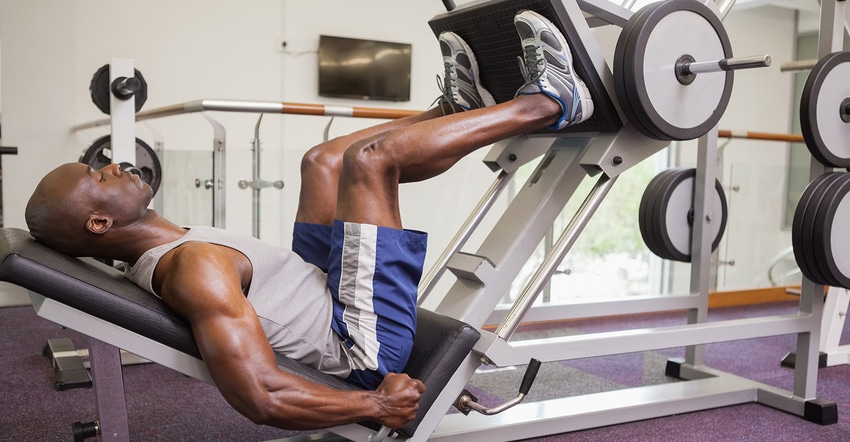Sports nutrition has always been innovating to serve athletes and those looking for a performance edge. Muscle-building efforts can be enhanced with select nutritional bioactives.

Body builders built the protein craze, thanks to protein’s role in building muscle. Three notable areas of research and product innovation are creating opportunities for product formulators to differentiate SKUs and serve brands.
First and foremost is the concept of muscle protein synthesis (MPS). This is the body’s ability to repair and build muscle tissue after exercise. The main stimulus for MPS after meals or resistance exercise is a rise of circulating essential amino acids. This is dependent on the amount of protein consumed, the capacity of a protein to provide essential amino acids, as well as the absorption kinetics of amino acids. The branched-chain amino acids (BCAAs) valine, isoleucine and leucine also have vital roles in controlling protein synthesis.
Related to that are the fractional components that make up protein that builds muscles—amino acids, in particular the BCAAs and especially the amino acid leucine.
Third is the mammalian target of rapamycin (mTOR) pathway. Other ingredients can also help different aspects of amassing muscle.
Having protein in the body helps to feed MPS, providing the fuel to continue the process. Whey protein is the king of protein sources in the body-building world because it is considered a “fast” protein—it metabolizes and goes to work quickest, compared to casein.1 But what if you could make whey perform even better?
Plasma Nutrition boasts seven human clinical trials that demonstrate greater bioavailability of its ioWhey than whey protein isolate–greater than 100 percent increases in leucine, BCAAs and essential amino acids compared to an identical but non-optimized protein.
In one human study the abstract of which was published online only, conducted by researchers at the University of South Florida, the ioWhey isolate led to a 103 percent increase in leucine, 111 percent increase in BCAAs and a 123 percent increase in essential amino acids when compared to an identical but non-optimized protein. The researchers found that even against high DH (degree of hydrolyzation, meaning the extent to which the protein has been broken down) hydrolyzed whey, the ioWhey demonstrated levels of increased bioavailability ranging from 48 to 60 percent higher.2
“ioWhey is a true game-changer for the protein market, presenting the most exciting innovation for whey since hydrolyzed protein was commercialized decades ago,” said Chris Flynn Rozanski, co-founder of Plasma Nutrition.
Nutrition 21’s branded ingredient, Velositol, boosts the effects of protein/BCAAs and exercise on MPS, thus contributing to the protein’s ability to help build muscle and improve lean body mass.3,4
“When added to protein or BCAAs, Velositol’s novel combination of specialized, highly soluble, non-GMO amylopectin, and patented chromium, rapidly stimulates insulin release and increases muscle cell sensitivity to insulin,” said Mallory Junggren, senior director of marketing at Velisitol ingredient supplier Nutrition 21. “This safely increases insulin levels to enhance amino acid uptake, stimulate and boost MPS.”
Phosphatidic acid’s ability to mediate the mTOR pathway finds benefit for product developers looking to serve athletic men and women who want to build muscle mass, increase strength, reduce fat mass and achieve a more ideal body composition.
Researchers conducted an eight-week, double-blind, placebo-controlled trial on 18 healthy, strength-trained men. The group supplementing with phosphatidic acid, who worked out three days a week, experienced significantly better gains in leg press strength and bench press strength (results were equivocal in fat mass and thigh muscle mass).5
A similar study on 16 men who worked out four days a week found those who supplemented with 750 mg/d phosphatidic acid had better gains on strength and a trend toward increased lean body mass (aka, fat loss).6
This article was excerpted from “Powering muscle gains,” which appeared in INSIDER’s digital magazine on sports nutrition. Click the link to access the full issue—and learn about an additional three innovative ingredients that can help power new product development innovation efforts.
References
Kanda A et al. “Effects of Whey, Caseinate, or Milk Protein Ingestion on Muscle Protein Synthesis After Exercise.” Nutrients. 2016 June 3;8(6).
Campbell B and Longstrom J. “Comparison of a Plasma Modified Non-Hydrolyzed Whey Protein Isolate Supplement and a Standard Processed High DH Hydrolyze Whey Protein Isolate Supplement on Bioavailability in Resistance-Trained Males.” https://www.becomeio.com/wp-content/uploads/2018/06/Comparison-of-a-Plasma-Modified-Non-Hydrolyzed-Whey-Protein-Supplement-and-a-Standard-Processed-High-DH-Hydrolyzed-Whey-Protein-Supplement-on-Bioavailability.pdf
Ziegenfuss TN et al. “Effects of an Amylopectin and Chromium Complex on the Anabolic Response to a Suboptimal Dose of Whey Protein.” J Int Soc Sports Nutr. 2017 Feb 8;14:6.
Komorowski J et al. “The Addition of an Amylopectin/Chromium Complex to Protein Enhances the Activity of Msucle Protein Synthesis Signaling Factors.” JISSN. 2018. 15(Suppl 1):A53.
Escalante G et al. “The Effects of Phosphatidic Acid Supplementation on Strength, Body Composition, Muscular Endurance, Power, Agility and Vertical Jump in Resistance Trained Men.” J Int Soc Sports Nutr. 2016 Jun 2;13:24.
Hoffman J et al. “Efficacy fo Phosphatidic Acid Ingestion on Lean Body Mass, Muscle Thickness and Strength Gains In Resistance-Trained Men.” J Int Soc Sports Nutr. 2012;9:47.
About the Author(s)
You May Also Like






.png?width=800&auto=webp&quality=80&disable=upscale)